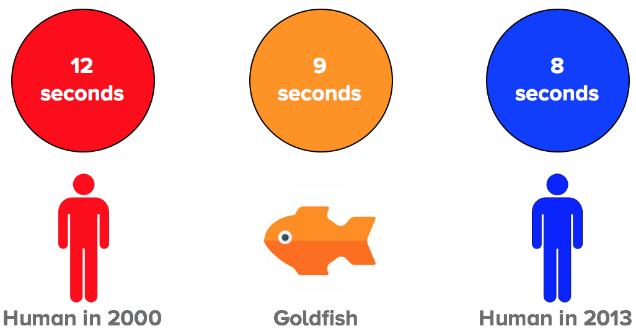The 3 Biggest Challenges Every Marketer Faces (And How to Defeat Them)
The business enterprise has two—and only two—basic functions: marketing and innovation. Marketing and innovation produce results; all the rest are costs. Marketing is the distinguishing, unique function of the business.
Peter Drucker, The Godfather of Modern Marketing
Despite Drucker’s wisdom, most organizations treat “marketing” as an afterthought—the last department to receive praise, the first to be cut when layoffs loom.
When executives were surveyed by Forbes magazine, they listed their priorities (in order) as:
- Finance
- Sales
- Production
- Management
- Legal
- People
Notice what’s missing?
Drucker knew better. He understood that marketing isn’t a “nice to have”; it’s one of an organization’s primary reasons for existing.
But marketing is hard. Especially these days—as competition grows, technology changes, and consumers become savvier and more cynical. But these challenges can be met with marketing. The challenges that the professional marketer faces today are, fundamentally, no different from when Drucker first highlighted their importance.
They are:
1. The Curse of Knowledge
Your users don’t think about you even a fraction-of-a-fraction as much as you think about you.
It’s natural to forget this truth. After all, you spend 40+ hours per week figuring out how, when, and where to try to connect with your target audiences.
You’re completely submerged by your organization; your users aren’t. That’s why, when you attempt to craft a marketing campaign or overall strategy, you’re burdened by the Curse of Knowledge.
The Curse of Knowledge is a cognitive bias in which you unknowingly assume that your audience has the same background or interests as you. We simply cannot “accurately reconstruct what a person … without the knowledge would think or how they would act.” (Wikipedia)
The implications of the curse are many—from overpricing goods because we value them more than the uninformed to emphasizing features that we, the knowledgeable, value instead of the ones our audience is likely to appreciate. But the gist of the Curse remains the same: If we know something that our audience doesn’t, we are unable to retrospectively bridge that gap.
In fact, we could accurately say that a professional marketer’s primary daily challenge is to overcome their own Curse of Knowledge.
How to combat the Curse of Knowledge:
Once again, research swoops in to save the day.
If you’re interested in getting the most from your users, you should never stop investing in ongoing user research. Research can take countless forms—including large-scale surveys, a series of intimate stakeholder interviews, competitive analysis, and usability testing.
The moment you think you know what your users are thinking—and, thus, don’t need to ask them anything further—is precisely the moment to verify your assumptions through research.
As we say around here all the time: “Research kills opinions.” Only by getting into the minds of your users can you escape the Curse of Knowledge.
2. Public Distaste for Being Sold To
Americans like to think of themselves as being suspicious of advertising, marketing, and sales. Plenty of surveys bear this out:
- 42% of Americans find brands less truthful today than 20 years ago (McCann)
- 25% of Americans report not buying from certain brands because of politics-inspired boycotts (Ipsos)
- Advertisers enjoy a 4% approval rating—a mere two points below the 6% approval Americans give to the U.S. Congress (Ipsos/4As)

These attitudes aren’t exactly new:
Advertisements are now so numerous that they are very negligently perused, and it is therefore become necessary to gain attention by magnificence of promises, and by eloquence sometimes sublime and sometimes pathetic.
Samuel Johnson (1759)
But what is new is the power users have. In 1759, if a particular blacksmith’s advertisements annoyed you, you didn’t necessarily have 20 others blacksmiths to choose from. These days, if you don’t want to donate to a particular nonprofit charity, you can find another within seconds on Google.
It’s a matter, as Billy Joel would croon, of trust.
To become a loyal fan of your organization, users need to trust you. They’re savvier than ever—with countless tools at their disposal for spending their money how, when, and why they want to. (Being exposed to several thousand marketing messages every day will do that to a person.)
Thoughts on marketing delivered to your inbox
How to overcome a distrustful public:
Nothing beats good, old-fashioned value. If your organization provides real, measurable, feelable value to the world, some portion of that world will pay you for it—and will do so, again and again. No marketing tactic, no robust SEO plan, no email marketing campaign will ever substitute for this kind of no-nonsense quality.
But you also need to speak to your user’s precise needs. One of the first things we, at Mighty Citizen, do when helping a client craft a message is conduct a complete brand/messaging audit. We look at everything the organization says about themselves—and when, where, and how frequently they say it. More of than not, we discover that organizations talk about themselves more than they talk about their target audience.
The savvy, cynical public is mostly savvy and cynical because they are bombarded with messages that have nothing to do with them. If you’re going to craft an advertisement, launch a Google AdWords strategy, or design a world-class website, you’d better make sure all of it is focused on what your users need and want.
It’s not about you. It’s never about you.
3. An Ever-Shrinking Attention Span
In 2000, the average adult human had an average attention span of 12 seconds.
Thirteen years later—once engineers had managed to put computers into our pockets—the average attention span had shrunk to a measly 8 seconds—only one second short of a goldfish’s.

You have precious few moments with your users, especially online. They hop onto their laptop or smartphone, search for something they want or need, and come across you:
- If your website takes longer than 4 seconds to load, pageviews drop by 11%. (Source)
- If they have to spend more than a 8 seconds figuring out who you are, what you do, what you sell, etc.—they’re 62% more likely to leave and 45% more likely to develop a “suboptimal” opinion of you.
There’s not much more to say about the shrinking attention span. Except maybe this: It’s not likely to get longer anytime soon.
How do we overcome our users’ tiny attention spans?
We need to emphasize descriptiveness over cuteness. The best copywriters are able to seamlessly meld these two—developing messages that clearly convey information while also being interesting.
But until you land on le mot juste, it’s best to err on the side of plain-spoken description. When someone lands on your homepage, they should be able to answer (7.9 seconds later) what it is you do and why it is they might care.
And then there’s the issue of photo selection. If your website/email/mailer uses images, you’d better invest in high-quality stock photos or, even better, custom photography all your own. One recent study found that people don’t even see stock photos (another result of increasing digital savviness). These generic images are using up valuable online real estate and are almost totally ignored by everyone.
A high-quality image with a human face that is relevant to the subject of the webpage, on the other hand, can help you break the eight-second barrier.


